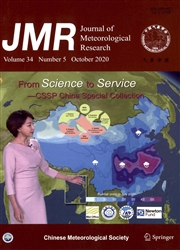Climate Variability over the Maritime Continent and Its Role in Global Climate Variation: A Review
作者:Song YANG,Tuantuan ZHANG,Zhenning LI,Shaorou DONG
摘要:The Maritime Continent(MC)consists of multiple islands with varying sizes and topography,and surrounding seas.It is characterized by rainfall(convection)variability on multiple spatial and temporal scales.Various largescale atmospheric,oceanic,and coupled climate systems,such as the El Ni?o–Southern Oscillation(ENSO),Indian Ocean Dipole(IOD),Madden–Julian Oscillation(MJO),and cold surge,exert significant influences on the spatiotemporal complexity of the MC climate and climate variability.As a major tropical heat source located within the warmest oceanic area(the western Pacific warm pool),the MC has been identified as a region of great importance for climate variation on the global scale.However,prediction of climate variability over the MC and its surrounding areas and the relationships to large-scale atmospheric circulation patterns are big challenges,even for state-of-the-art climate models.In this paper,we provide a thorough review on current understanding of the spatiotemporal complexity and prediction of climate variability over this important region,and its influence on global climate variation.
发文机构:School of Atmospheric Sciences Guangdong Province Key Laboratory for Climate Change and Natural Disaster Studies Southern Laboratory of Ocean Science and Engineering(Zhuhai Institute of Environment Climate Center of Guangdong Province
关键词:MaritimeContinent(MC)CLIMATEVARIATIONandpredictionSPATIOTEMPORALcomplexityglobalCLIMATEREVIEW
分类号: P467[天文地球—大气科学及气象学]
- Major Scientific Achievements of the First China–Japan Cooperative GAME/HUBEX Experiment: A Historical Review
- Identifying and Quantifying Pixel-Level Uncertainty among Major Satellite Derived Global Land Cover Products
- A Multivariable Approach for Estimating Soil Moisture from Microwave Radiation Imager(MWRI)
- Spatial Distribution and Temporal Trend Characteristics of Agro-Climatic Resources and Extreme Climate Events during the Soybean Growing Season in Northeast China from 1981 to 2017
- Bias Analysis and Correction of Ground Surface Temperature Observations across China
- Research Progress on Estimation of the Atmospheric Boundary Layer Height
- Joint Effect of East Asia-Pacific and Eurasian Teleconnections on the Summer Precipitation in North Asia
- Increasing Trend of Summertime Synoptic Wave Train Activity over the Western North Pacific since 1950
- Spatiotemporal Drought Assessment over Sahelian Countries from 1985 to 2015
- Climate Sensitivity and Feedbacks of BCC-CSM to Idealized CO2 Forcing from CMIP5 to CMIP6


